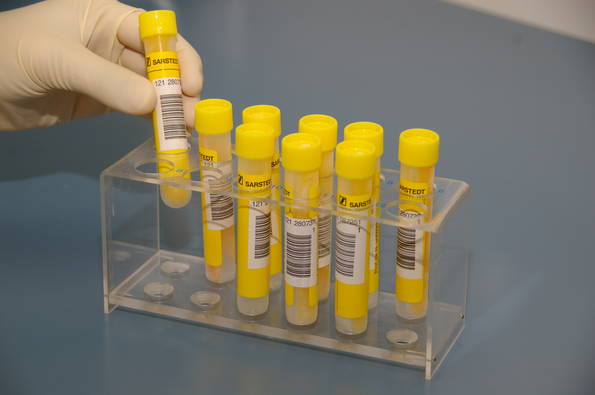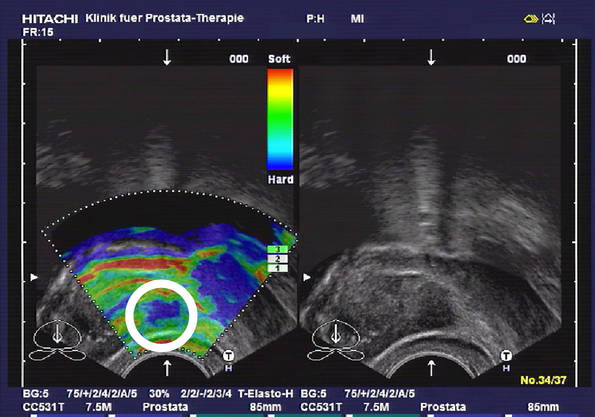A precise diagnosis
An elevated PSA level can - but does not necessarily - indicate a prostate tumor.
Therefore an elevated PSA level should not be the sole reason for carrying out a prostate biopsy! In order to identify the cause of an elevated PSA level, non-invasive methods should always be utilised to begin with. This is because an elevated PSA level can often be caused by a benign enlargement, a voiding dysfunction or bacterial infection of the prostate. In these cases, a prostate biopsy is not necessary. However, if during the examination there are indications of a prostate tumor, a biopsy should be planned with the utmost precision and carried out in accordance with all the latest findings. We reject the use of the so-called randomised (randomly distributed) transrectal biopsy. There is a whole spectrum of gentle examination methods for suspected cancer.


Using real-time elastography, typical tumor solidifications that occur in cancerous tissue changes, can be made visible long before they can be detected using a digital rectal examination. The localisation and extent of the tumor can therefore be assessed at a very early stage. We have already been using this ultrasonic diagnostic procedure in the Clinic for Prostate Therapy since 2008. If these investigations yield results that reinforce the suspicion of a prostate tumor, then further diagnostic tests can be carried out using high resolution MRI imaging techniques. The result can be confirmed through the histological examination of a single tissue sample, which is not performed in a transrectal manner, but via the skin. Also, with the PSMA PET CT method of investigation, the typical tumor metabolism in the tissue can be made visible. In addition, an extremely precise diagnostic investigation can be performed to determine the spread of any cancerous tissue, which will then determine the further strategy for therapy. With the help of these investigations, a biopsy can in many cases be avoided. The information is far more comprehensive so that in individual cases organ-saving prostate cancer therapy is possible using high-intensity ultrasound (HIFU).
